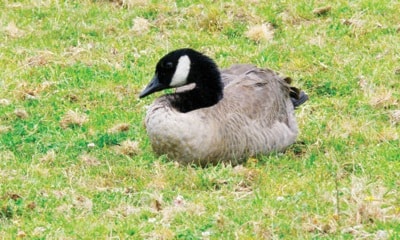Parksville council is considering a $25,000 grant to the Guardians of Mid-Island Estuaries Society (GMIES) to help restore the Englishman River estuary from Canada goose damage, possibly leading to a cull.
In a second presentation to the council this week, Danielle Morrison, a GMIES spokesperson, gave further details on the devastation the resident geese have done in the last 30 years and the kind of work needed to repair it.
The group has been studying the Englishman and Little Qualicum estuaries for several years, banding and tracking birds and fencing off areas of carex grass, but this has only been a preliminary step.
They now hope to start an extensive three year project to do better scientific research and develop a concrete management strategy.
Morrison showed before and after photos of the estuary where deep grass has been reduced to mud.
“This problem has been around 30 or 40 years and the problem is we’ve had study after study, what I’d like to know is why nothing gets done?” asked councillor Al Greir.
“It takes a coordinated effort and lasting strategy,” Morrison said. In the past individual groups may have done their own projects and GMIES is working towards a coordinated scientific strategy.
Greir said that whatever the study finds, “At the end of the day we’re going to have to cull.”
Coun. Marc Lefebvre agreed, “I support a cull, why keep studying the problem. The estuary looks like a moonscape, what more evidence do you need?”
Morrison said a cull may be the end result, “if the city is on board with that, it is a lot easier to keep numbers low with one event.”
But she pointed out “we don’t know what the carrying capacity is,” in terms of how many geese there currently are and how many the estuary can handle.
She also said that to get permission for a cull they’d need very solid scientific evidence. “Sometimes its frustrating but you have to prove the most obvious thing in the world.”
Before a cull, the management plan would involve egg addling, installing more fencing and re-planting carex grasses.
They are asking the city for for $10,000 for the first year followed by $8,000 and $7,000. The regional district has committed $10,000 a year for the next three years in principal and expect to receive $46,000 from their various other partners.
